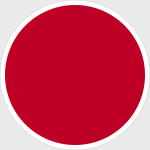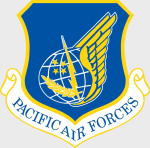Hobby Master HA2701 Japanese Air Self-Defense Force Mitsubishi F-2A Multirole Fighter - 3rd Fighter Squadron, 3rd Air Wing, Misawa AFB, Japan (1:72 Scale)
"Obsolete weapons do not deter."
- British Prime Minister Margaret Thatcher
 The F-2 is a fighter aircraft manufactured by Mitsubishi Heavy Industries (MHI) and Lockheed Martin for the Japan Air Self-Defense Force, with a 60/40 split in manufacturing between Japan and the USA. Production started in 1996 and the first aircraft entered service in 2000. By 2008, the first 76 aircraft are expected to be in service, with a total of 94 airframes under contract.
The F-2 is a fighter aircraft manufactured by Mitsubishi Heavy Industries (MHI) and Lockheed Martin for the Japan Air Self-Defense Force, with a 60/40 split in manufacturing between Japan and the USA. Production started in 1996 and the first aircraft entered service in 2000. By 2008, the first 76 aircraft are expected to be in service, with a total of 94 airframes under contract.
Work started in 1980s under the FS-X program, and began in earnest with a memorandum of understanding between Japan and the United States. It would lead to a new fighter based on the General Dynamics (post 1993, Lockheed Martin) F-16 Fighting Falcon, and in particular the F-16 Agile Falcon proposal. Lockheed Martin and Mitsubishi Heavy Industries co-developed and co-produce the aircraft, the company is a major subcontractor to Mitsubishi, some of the early developmental work was actually under General Dynamics, who sold its aircraft division to LM in 1993. It is essentially an execution of the F-16 Agile Falcon proposal - a late-1980s plan for an enlarged F-16 which was passed over in the U.S. in favor of an all-new fighter program (Joint Strike Fighter). The F-2 used the wing design of the F-16 Agile Falcon, but much of the electronics were further updated to 1990s standards. The overall concept of the enlarged F-16 by General Dynamics was intended as a cheap counter to the then emerging threat of Su-27/MiG-29.
In October 1987, Japan selected the F-16 as the basis of its new secondary fighter, to replace the aging Mitsubishi F-1 and supplement its main air superiority fighter, the F-15J as well as the F-4EJ. Also during the 1980s, General Dynamics (who developed the F-16) had proposed its F-16 Agile Falcon to the USAF. While the US would pass over the design concept in favor of all-new types (F-22/JSF) and upgrades to its existing fleet, the enlarged F-16 would find a home in Japan.
The Japanese may eventually make up to 94, at a cost of roughly US $110 million each in 2004 dollars. Much of the F-16 technology used in the F-2 was the subject of some political debate in the U.S. and Japan in the early 1990s. The technology transfers were authorized however, and the project proceeded.
The F-2's maiden flight was on October 7th, 1995. Later that year, the Japanese government approved an order for 141 (but that was soon cut to 130), to enter service by 1999; structural problems resulted in service entry being delayed until 2000. Because of issues with cost-efficiency, orders for the aircraft were curtailed to 98 in 2004.
Pictured here is a 1:72 scale replica of a Japanese Air Self Defense Force Mitsubishi F-2A fighter that is assigned to the 3rd Fighter Squadron, 3rd Air Wing, based out of Misawa AFB, Japan.
Sold Out!
Dimensions:
Wingspan: 7-inches
Length: 8-inches
Release Date: October 2009
 Historical Account: "Joint Services" - Misawa Air Base is a United States military facility located in the city of Misawa, 3 miles (4.8 km) west of the Pacific Ocean, 10 miles (16 km) northeast of Towada, 18 miles (29 km) northwest of Hachinohe, and 425 miles (684 km) north of Tokyo, in Aomori Prefecture, in the T˘hoku region in the northern part of the island of Honshű of Japan. It is a Pacific Air Forces (PACAF) facility with the 35th Fighter Wing (35 FW) as its host wing.
Historical Account: "Joint Services" - Misawa Air Base is a United States military facility located in the city of Misawa, 3 miles (4.8 km) west of the Pacific Ocean, 10 miles (16 km) northeast of Towada, 18 miles (29 km) northwest of Hachinohe, and 425 miles (684 km) north of Tokyo, in Aomori Prefecture, in the T˘hoku region in the northern part of the island of Honshű of Japan. It is a Pacific Air Forces (PACAF) facility with the 35th Fighter Wing (35 FW) as its host wing.
Misawa is the only combined, joint service installation in the western Pacific. It houses three U.S. military services (Army, Navy, and Air Force), as well as the Japan Air Self Defense Force. The base is home to 5,200 US military personnel, as well as 350 US civilian employees and 900 Japanese national employees.
Misawa also has scheduled civilian flights operated by Japan Airlines to Tokyo International Airport (Haneda) and Osaka International Airport (Itami), making it one of the few joint civilian-military airports in the U.S. defense grid.
The Misawa Passive Radio Frequency space surveillance site is used for tracking satellites using the signals they transmit. It also provides coverage of geosynchronous satellites using the Deep Space Tracking System (DSTS). The Misawa Security Operations Center (MSOC), located in the northwestern part of the Air Base, is believed to be one of the largest ECHELON ground stations.


